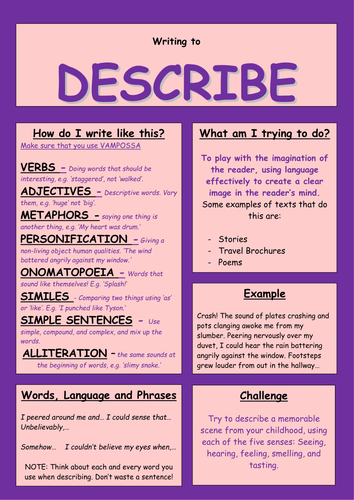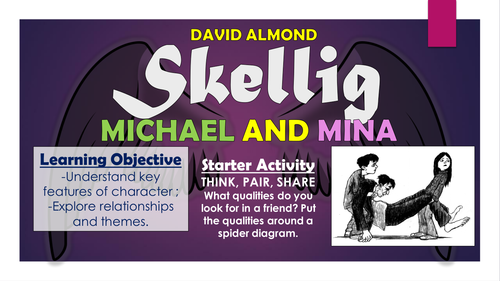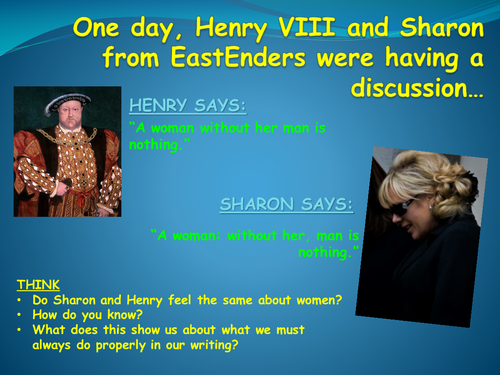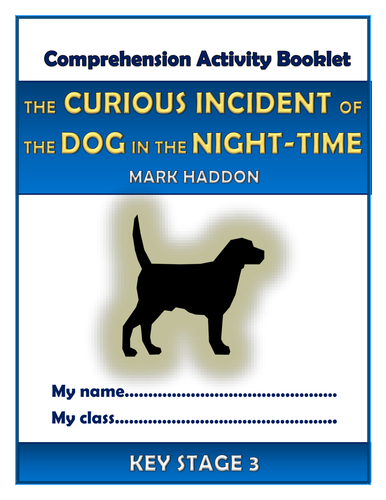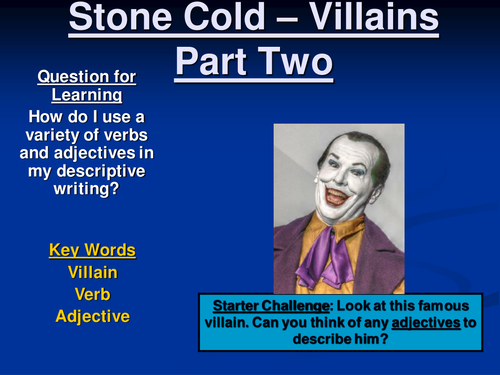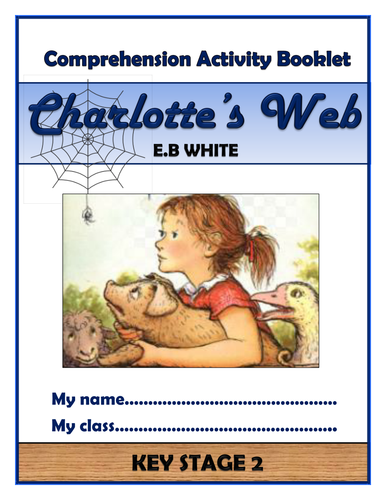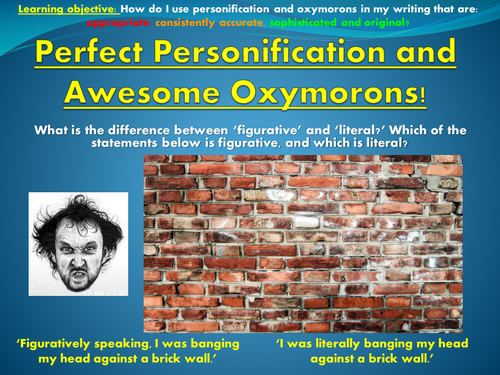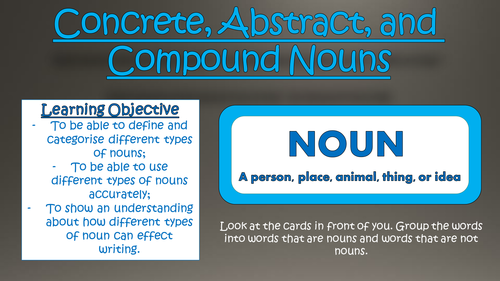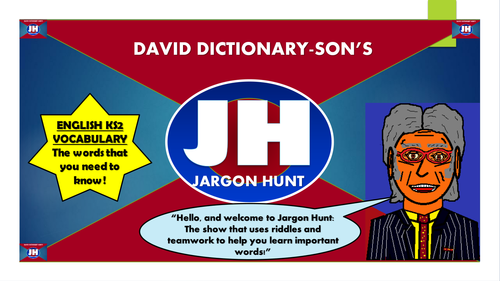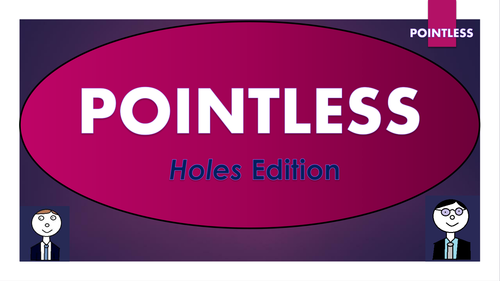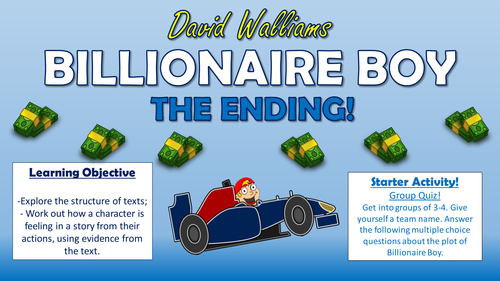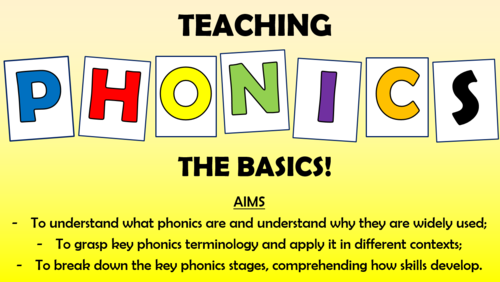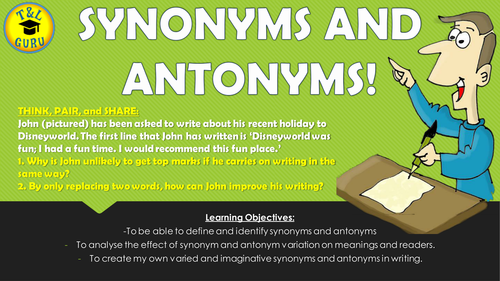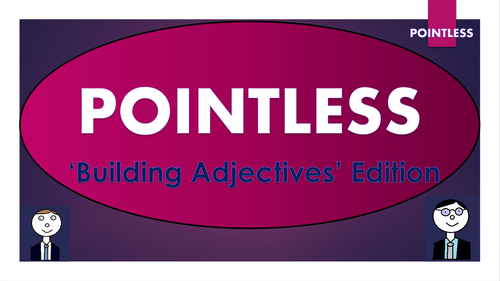
3k+Uploads
1890k+Views
2228k+Downloads
Literacy for early childhood

The Twits - Roald Dahl - KS1 Comprehension Activities Booklet!
This resource booklet contains a wide range of age-appropriate, engaging, and meaningful comprehension activities for use throughout the reading of Roald Dahl's 'The Twits.' Teachers have found them particularly useful in comprehension or guided reading sessions. They are perfect for aiding the progress of children towards meeting the KS1 expectations within the new National Curriculum framework. Children love learning from these resources, whilst they are also of great use to teachers, as there is explicit information within each task regarding which comprehension strands the task is designed to demonstrate. They also relate to key extracts, characters, and themes from the story, ensuring that children gain a deep understanding of the text.
Activities within the booklet include:
- 'Feed Mr. Twit' - to enable students to demonstrate that they can: 'talk about their favourite words and phrases in the story;'
- 'Dahl's Description' - to enable students to demonstrate that they can: 'Explain meanings of words that they know and ask the meaning of new words. Link the meaning of new words to words that they already know;'
- 'The Mugglewumps' - to enable students to demonstrate that they can: 'Say what might happen next in a story based on what has happened so far;'
- 'Mr. and Mrs. Twit' - to enable students to demonstrate that they can: 'Enjoy reading and discussing the order of events in books and how items of information are related.'
Plus many, many more activities (the booklet is around 20 pages in length!) I've also added it as a PDF in case the formatting differs on your computer.
All images are licensed for commercial use, and are cited on a separate document (included).
Bundle Sale

Stone Cold Big Bundle!
THIS BUNDLE CONTAINS ALL OF THE STONE COLD LESSONS, IN ADDITION TO THE COMPREHENSION BOOKLET, THE KNOWLEDGE ORGANISER AND THE POINTLESS GAME!
This engaging, varied, and informative scheme of learning is designed to help students gain understanding, assessment skills, and key interpretations of Robert Swindells’ ‘Stone Cold.’ Made up of a wide-range of interesting and exciting lessons, students should complete this scheme having gathered vital skills in: interpreting the significant meanings of the text, understanding the writer’s ideas within the text, identifying the traits of key characters, settings, and themes, understanding dramatic and language devices, and relating the text to its social and historical context.
Stimulating, visual, and easily adaptable, these lessons provide suggested learning objectives and outcomes for students of a wide-range of abilities - The vast majority of tasks are differentiated to allow for different abilities and needs in your classroom. Each lesson loosely follows this logical learning journey to ensure that students learn in bite-size steps:
- Engaging
- Defining/ Understanding
- Identifying/Remembering
- Analysing/ Creating
- Peer or self evaluating.
All of the lessons are interactive, employ a variety of different teaching and learning methods and styles, and are visually-engaging. Resources, worksheets, and lesson plans are all provided.

Writing Purposes - Helpsheets/Posters for Literacy and English
These handy helpsheets have been employed by teachers across the curriculum to aid students completing extended writing tasks for a particular purpose. There are helpsheets for:
- Informing
- Describing
- Analysing
- Arguing
- Explaining
- Evaluating
- Persuading
- Instructing
Each helpsheet defines the aim of the writing purpose, details the key writing features to be used, offers sentence starters, and gives a short example of the writing purpose, alongside other hints and tips.
These helpsheets have also been blown up to A3 or A2 size to become engaging and interactive literacy across the curriculum posters.
Bundle Sale

Holes Huge Bundle!
THIS BUNDLE CONTAINS ALL OF THE HOLES LESSONS, IN ADDITION TO THE COMPREHENSION BOOKLET, THE KNOWLEDGE ORGANISER AND THE POINTLESS GAME!
This engaging, varied, and informative scheme of learning is designed to help students gain understanding, assessment skills, and key interpretations of Louis Sachar's 'Holes.' Made up of a wide-range of interesting and exciting lessons, students should complete this scheme having gathered vital skills in: interpreting the significant meanings of the text, understanding the writer's ideas within the text, identifying the traits of key characters, settings, and themes, understanding dramatic and language devices, and relating the text to its social and historical context.
Stimulating, visual, and easily adaptable, these lessons provide suggested learning objectives and outcomes for students of a wide-range of abilities - The vast majority of tasks are differentiated to allow for different abilities and needs in your classroom. Each lesson loosely follows this logical learning journey to ensure that students learn in bite-size steps:
- Engaging
- Defining/ Understanding
- Identifying/Remembering
- Analysing/ Creating
- Peer or self evaluating.
All of the lessons are interactive, employ a variety of different teaching and learning methods and styles, and are visually-engaging. Resources, worksheets, and lesson plans are all provided.

Billionaire Boy - KS2 Comprehension Activities Booklet!
This resource booklet contains a wide range of age-appropriate, engaging, and meaningful comprehension activities for use throughout the reading of David Walliams' 'Billionaire Boy.' Teachers have found them particularly useful in comprehension or guided reading sessions. They are perfect for aiding the progress of children towards meeting the upper KS2 expectations within the new National Curriculum framework. Children love learning from these resources, whilst they are also of great use to teachers, as there is explicit information within each task regarding which comprehension strands the task is designed to demonstrate. They also relate to key extracts, characters, and themes from the story, ensuring that children gain a deep understanding of the text.
Activities within the booklet include:
- 'An Interview with Joe Spud' - to enable students to demonstrate that they can: 'Understand what is read by drawing on information from more than one paragraph, identifying key details that support the main ideas, and using quotations for illustration;'
- 'Walliams' Description' - to enable students to demonstrate that they can: 'Explain meanings of words that they know and ask the meaning of new words. Link the meaning of new words to words that they already know;'
- 'The Grubbs!' - to enable students to demonstrate that they can: 'Understand what is read by drawing on information from more than one paragraph, identifying key details that support the main ideas, and using quotations for illustration;'
- 'Figurative Language in Billionaire Boy' - to enable students to demonstrate that they can: 'Discuss and evaluate how authors use language, including figurative language, to create an impact on the reader.'
Plus many, many more activities (the booklet is 21 pages in length!) I've also added it as a PDF in case the formatting differs on your computer.
All images are licensed for commercial use, and are cited on a separate document (included).

Skellig - KS2 Comprehension Activities Booklet!
This resource booklet contains a wide range of age-appropriate, engaging, and meaningful comprehension activities for use throughout the reading of David Almond's 'Skellig.' Teachers have found them particularly useful in comprehension or guided reading sessions. They are perfect for aiding the progress of children towards meeting the upper KS2 expectations within the new National Curriculum framework. Children love learning from these resources, whilst they are also of great use to teachers, as there is explicit information within each task regarding which comprehension strands the task is designed to demonstrate. They also relate to key extracts, characters, and themes from the story, ensuring that children gain a deep understanding of the text.
Activities within the booklet include:
- 'An Interview with Michael' - to enable students to demonstrate that they can: 'Understand what is read by drawing on information from more than one paragraph, identifying key details that support the main ideas, and using quotations for illustration;'
- 'Almond's Description' - to enable students to demonstrate that they can: 'Explain meanings of words that they know and ask the meaning of new words. Link the meaning of new words to words that they already know;'
- 'Mina!' - to enable students to demonstrate that they can: 'Understand what is read by drawing on information from more than one paragraph, identifying key details that support the main ideas, and using quotations for illustration;'
- 'Figurative Language in Skellig' - to enable students to demonstrate that they can: 'Discuss and evaluate how authors use language, including figurative language, to create an impact on the reader.'
Plus many, many more activities (the booklet is 21 pages in length!) I've also added it as a PDF in case the formatting differs on your computer.
All images are licensed for commercial use, and are cited on a separate document (included).

Skellig - Michael and Mina!
This engaging and informative lesson helps students to make detailed interpretations about two of the main characters in David Almond’s Skellig: Michael and Mina. In particular, students comprehend the character traits of the two characters, before analysing the development of their relationship over the course of the story.
The lesson follows a step-by-step learning journey, in which children learn through:
- Defining and exemplifying the key character traits of both Michael and Mina;
- Reading and tracking Michael and Mina's relationship development throughout the story;
- Analysing how and why Michael and Mina's relationship becomes so strong by the end of the story;
- Peer assessing each other's learning attempts;
Included is:
- Whole lesson PowerPoint - colourful and comprehensive;
- Character Profile Sheets - Michael and Mina (pdf and word);
- Relationship Development Graph (pdf and word);
- Essay Template;
- Comprehensive lesson plan.
There are also opportunities for group learning, speaking and listening, peer assessment, and whole class discussion. I originally used these resources with a year 7 class, however colleagues have used them for between years 4 and 9 with minimal adaptations.
All images are licensed for commercial use, and image rights are listed on the last page of the presentation.

VCOP - Punctuation
Perfect for English lessons, or as part of a literacy across the curriculum scheme, the VCOP lessons aim to build students' fundamental writing skills.
Engaging, differentiated, and easily adaptable, this lesson aims to improve students' skills at using varied and appropriate punctuation, following a logical learning journey to ensure that students learn in bite-size steps:
- Defining punctuation marks;
- Identifying varied vocabulary in humorous writing examples;
- Analysing varied vocabulary in an interesting descriptive passage;
- Creating their descriptive piece, using varied vocabulary;
- Peer or self evaluating their varied vocabulary attempts.
Resources, worksheets, and a lesson plan are provided.
This resource can either be bought alone, or as part of a VCOP bundle (see resource VCOP - All lessons & scheme - vocabulary, connectives, openers, punctuation) for just £1 more.

Much Ado About Nothing - KS3 Comprehension Activities Booklet!
This resource booklet contains a wide range of age-appropriate, engaging, and meaningful comprehension activities for use throughout the reading of William Shakespeare's 'Much Ado About Nothing.' Teachers have found them particularly useful in comprehension or guided reading sessions. They are perfect for aiding the progress of children towards meeting the KS3 expectations within the new National Curriculum framework. Children have found these resources extremely engaging, and for teachers there is explicit information within each task regarding which comprehension strands the task is designed to demonstrate. They also relate to key extracts, characters, and themes from the story, ensuring that children gain a deep understanding of the text.
Activities within the booklet include:
- 'Context: Life in Shakespeare's Times' - to enable students to demonstrate that they can: 'Know the purpose, audience and context of the writing and drawing on this knowledge to support comprehension.'
- 'Shakespeare's Description' - to enable students to demonstrate that they can: 'Know how language, including figurative language, vocabulary choice, grammar, text structure and organisational features, present meaning.'
- 'Hero' - to enable students to demonstrate that they can: 'Study setting, plot, and characterisation, and the effects of these.'
- 'Vocabulary Inspector' - to enable students to demonstrate that they can: 'Learn new vocabulary, relating it explicitly to known vocabulary and understanding it with the help of context and dictionaries.'
Plus many, many more activities (the booklet is 22 pages in length!) I've also added it as a PDF in case the formatting differs on your computer.
All images are licensed for commercial use, and are cited on a separate document (included).

The Curious Incident of the Dog in the Night-time KS3 Comprehension Activities Booklet!
This resource booklet contains a wide range of age-appropriate, engaging, and meaningful comprehension activities for use throughout the reading of Mark Haddon's 'The Curious Incident of the Dog in the Night-time.' Teachers have found them particularly useful in comprehension or guided reading sessions. They are perfect for aiding the progress of children towards meeting the KS3 expectations within the new National Curriculum framework. Children have found these resources extremely engaging, and for teachers there is explicit information within each task regarding which comprehension strands the task is designed to demonstrate. They also relate to key extracts, characters, and themes from the story, ensuring that children gain a deep understanding of the text.
Activities within the booklet include:
- 'Context: Asperger's Syndrome' - to enable students to demonstrate that they can: 'Know the purpose, audience and context of the writing and drawing on this knowledge to support comprehension.'
- 'Haddon's Description - The Police Station' - to enable students to demonstrate that they can: 'Know how language, including figurative language, vocabulary choice, grammar, text structure and organisational features, present meaning.'
- 'Ed Boone' - to enable students to demonstrate that they can: 'Study setting, plot, and characterisation, and the effects of these.'
- 'Vocabulary Inspector' - to enable students to demonstrate that they can: 'Learn new vocabulary, relating it explicitly to known vocabulary and understanding it with the help of context and dictionaries.'
Plus many, many more activities (the booklet is 21 pages in length!) I've also added it as a PDF in case the formatting differs on your computer.
All images are licensed for commercial use, and are cited on a separate document (included).

Stone Cold - Assorted Resources! (PowerPoints, Activities, Worksheets, Templates, etc.)
This pack contains a vast number (I think there's about 20 resources here) of activities, resources, and ideas for the teaching of Robert Swindell's 'Stone Cold.' They should provide an excellent starting point for anybody who wants to teach the book and is looking for some inspiration for individual lesson content/ tasks. The vast majority of these tasks can be adapted for differing age groups/ ability ranges/ needs.
The pack contains resources that focus on the key themes in the book, such as stereotyping, alienation, and homelessness. There are also resources that enable to build individual reading skills, such as inferring and deducing, pulling out quotations, and analysing language. In writing, students learn to think imaginatively and create texts appropriate to audience and purpose.
All images are licensed for commercial use, and are cited on the final slides of the PowerPoints.

Charlotte's Web - KS2 Comprehension Activities Booklet!
This resource booklet contains a wide range of age-appropriate, engaging, and meaningful comprehension activities for use throughout the reading of E.B White's 'Charlotte's Web.' Teachers have found them particularly useful in comprehension or guided reading sessions. They are perfect for aiding the progress of children towards meeting the upper KS2 expectations within the new National Curriculum framework. Children love learning from these resources, whilst they are also of great use to teachers, as there is explicit information within each task regarding which comprehension strands the task is designed to demonstrate. They also relate to key extracts, characters, and themes from the story, ensuring that children gain a deep understanding of the text.
Activities within the booklet include:
- 'An Interview with John Arable' - to enable students to demonstrate that they can: 'Understand what is read by drawing on information from more than one paragraph, identifying key details that support the main ideas, and using quotations for illustration;'
- 'White's Description' - to enable students to demonstrate that they can: 'Explain meanings of words that they know and ask the meaning of new words. Link the meaning of new words to words that they already know;'
- 'Charlotte and 'Wilbur' - to enable students to demonstrate that they can: 'Understand what is read by drawing on information from more than one paragraph, identifying key details that support the main ideas, and using quotations for illustration;'
- 'Figurative Language in 'Charlotte's Web' - to enable students to demonstrate that they can: 'Discuss and evaluate how authors use language, including figurative language, to create an impact on the reader.'
Plus many, many more activities (the booklet is 21 pages in length!) I've also added it as a PDF in case the formatting differs on your computer.
All images are licensed for commercial use, and are cited on a separate document (included).

Perfect Personification and Awesome Oxymorons!
This is an exciting and engaging lesson/set of tasks aiming to build students' skills at using personification and oxymorons in their writing . It was taught during an observation lesson where the teacher received an Outstanding judgement.
Students learn to:
- Define and give examples of what personification and oxymorons are;
- Identify personification and oxymorons in fun and interesting examples;
- Analyse what makes them effective;
- Create their own personification and oxymorons using step-by-step advice;
- Peer assess using a clear and succinct success criteria.
It comes complete with:
- Engaging and visual PowerPoint to guide students (and teacher!) through the lesson;
- Colourful and thought-provoking two-part worksheet for the two main create tasks;
- Lesson plan/ teacher guidance sheet, which goes through the lesson step-by-step;
All pictures are licensed for commercial use, and image authors cited on the final slide.
This lesson can also be bought as part of the Descriptive Devices bundle for just £5. The bundle leads students through each language device needed in order to write to describe confidently.
Alternatively, you can buy the Descriptive Writing Big Bundle (All descriptive devices lessons, structuring and organising writing lesson, capturing the readers attention lesson, and the literacy writing mat) for £6.

Concrete, Abstract, and Compound Nouns!
This interesting and engaging lesson enables students to be able to define and categorise different types of nouns, to be able to use different types of nouns accurately, and to show an understanding about how different types of noun can affect writing. This knowledge is of particular importance when working through the new National Curriculum.
The lesson follows a clear, logical, bite-size learning journey, which guides students towards differentiated learning objectives. Over the course of this journey, they become able to:
- Define what concrete, abstract, and compound nouns are;
- Identify and categorise different concrete, abstract, and compound nouns;
- Write accurately using a range of concrete, abstract, and compound nouns, to increase the depth and variety of their writing;
- Peer assess each other's learning attempts.
This resource pack includes:
- A visually engaging whole-lesson PowerPoint presentation;
- Word cards for sorting;
- Venn diagram mat for card-sorting activity
- Clear and interesting worksheets to record student responses;
- A detailed lesson plan, complete with what the teacher and students should aim to achieve at each stage of the lesson.
All images are licensed for commercial use, and are cited on the final slide of the PowerPoint/ the bottom of worksheets.

Jargon Hunt - KS2 English - Building Literacy through Riddles and Teamwork!
Welcome to Jargon Hunt! This engaging and exciting activity is perfect for building students' literacy skills; helping them to understand key vocabulary through cryptic rhyming riddles and teamwork.
Once the game is introduced and the rules are shared (on the presentation) students are given a riddle card and an answer card. The only catch is that their answer card does not match their riddle! Through reading their riddle to others, and allowing others to read their riddles to them, students learn the English vocabulary as prescribed for teaching at KS2 in the new National Curriculum.
Provided in this pack are:
- 30+ slide presentation, hosted by David Dictionary-son, who walks students through the game in a step-by-step fashion.
-Class-size pack of riddle cards and answer cards. They simply need to printed on card, or printed on paper and laminated.
This resource is a valuable tool for helping students to comprehend the words that they will need to understand in the New Curriculum, build valuable speaking and listening skills, and also have lots of fun!
This resource can be bought alone. or as a part of a Jargon Hunt KS2 bundle (English, Maths, and Science) for just £1 more!

Holes Pointless Game (and template to create your own games!)
Based on the popular game show 'Pointless', this resource is perfect for use as a whole lesson resource, enrichment option, or revision tool. Editable, so that you can change to any other topic or change questions. (I've also added a blank template so that you can make your own games from scratch). Containing almost 30 slides of sound clips, interesting tasks, and suitably challenging questions, this resource is effective at both promoting engagement and enhancing learning. There are several full rounds of questions to build or revisit knowledge of characters, plot, and themes in 'Holes.'
Round 1. The characters in Holes
Round 2. Quotations from the text
Round 3. Settings and Objects
Round 4. Themes in Holes
The nature of this game ensures that the resource can challenge students of all levels.
A blank template has also been added, so that you can create your own games!

Billionaire Boy - The Ending!
This fun and informative lesson helps students to understand the key events of the ending of David Walliams ‘Billionaire Boy.’ In particular, students explore the concept of narrative structure, and apply the events of Billionaire Boy to each narrative stage. They explore to what extent the ending of the text fits the features of an adequate denouement.
The lesson follows a step-by-step learning journey, in which children learn through:
-Taking part in a fun group quiz to recap on the key elements of the plot leading up to the ending;
- Reading and understanding extracts from the ending of Billionaire Boy, answering comprehension questions to check their understanding;
- Understanding the features of narrative structure, and applying Billionaire Boy to the individual elements;
- Analysing how the ending of Billionaire Boy fits the features of a denouement;
- Self assessing their own learning attempts.
Included is:
- Whole lesson PowerPoint - colourful and comprehensive;
- 'Narrative Structure Template (and PDF version);
- Selected extracts - Billionaire Boy ending;
- The Ending Essay Template;
- Comprehensive lesson plan.
There are also opportunities for group learning, speaking and listening, peer assessment, and whole class discussion. I originally used these resources with a mixed-ability year 7 class, however colleagues have used them for between years 3 and 9 with some adaptations.
All images are licensed for commercial use, and image rights are listed on the last page of the presentation.

Teaching Phonics: The Basics CPD Session!
This informative, engaging CPD session is intended to offer a valuable introduction to phonics for teachers and support staff. It aims to enable participants to:
-To understand what phonics are and understand why they are widely used;
-To grasp key phonics terminology and apply it in different contexts;
-To break down the key phonics stages, comprehending how skills develop.
The session is aimed at those who are new to phonics. I myself moved from secondary to primary, and can understand how daunting phonics schemes can appear! These resources, whilst detailed, present ideas in a simple way, helping to make key ideas understandable. Included is:
A 27-slide colourful, clear PowerPoint presentation, including post-CPD quiz;
Resources for an optional card-sorting activity, to learn appropriate phonics terminology;
A comprehensive phonics helpsheet, detailing most of the main points from the session.
I hope that you find these resources helpful. Many thanks!

Synonyms and Antonyms!
This detailed and engaging lesson enables students to gain an understanding of what synonyms and antonyms are, and why knowledge of them is important when writing. Students also learn to use a variation of synonyms and antonyms in their own writing, for both clarity and effect.
Students learn through a number of fun and interactive tasks, which enable them to:
- Define and exemplify synonyms and antonyms;
- Identify the synonyms and antonyms for a range of different words;
- Understand and analyse how synonyms and antonyms can be used for clarity and effect;
- Create a written piece using a variety of synonyms and antonyms for clarity and effect;
- Evaluate their use of different synonyms and antonyms.
The resources include:
-Visually engaging and comprehensive whole-lesson presentation;
-Resources for the card-sorting activity;
-A model example and analysis worksheet;
-Step-by-step lesson plan.
All images are licensed for commercial use, and are cited on the final page of the slide.

Pointless - Building Adjectives Edition
Based on the popular game show 'Pointless', this resource is perfect for use as a starter activity, plenary, or revision tool. Editable, so that you can change to any other topic or change the questions/answers. Containing almost 30 slides of sound clips, engaging visuals, and suitably challenging questions, this resource is effective at both promoting engagement and enhancing learning.
There are several full rounds of questions to build students' understanding of adjectives, including:
1. Finding synonyms of dull adjectives
2. Defining adjectives
3. Unscrambling anagrams of adjectives
4. Finding the most complex and interesting adjectives.
The nature of the game ensures that this resource can challenge students of all levels.
NOTE: You can buy this resource alone, or in a bundle of 8 Pointless games, for only £1 more!



